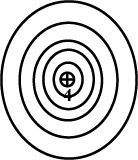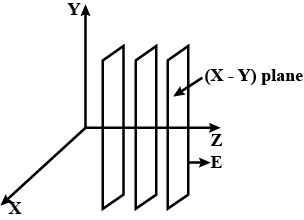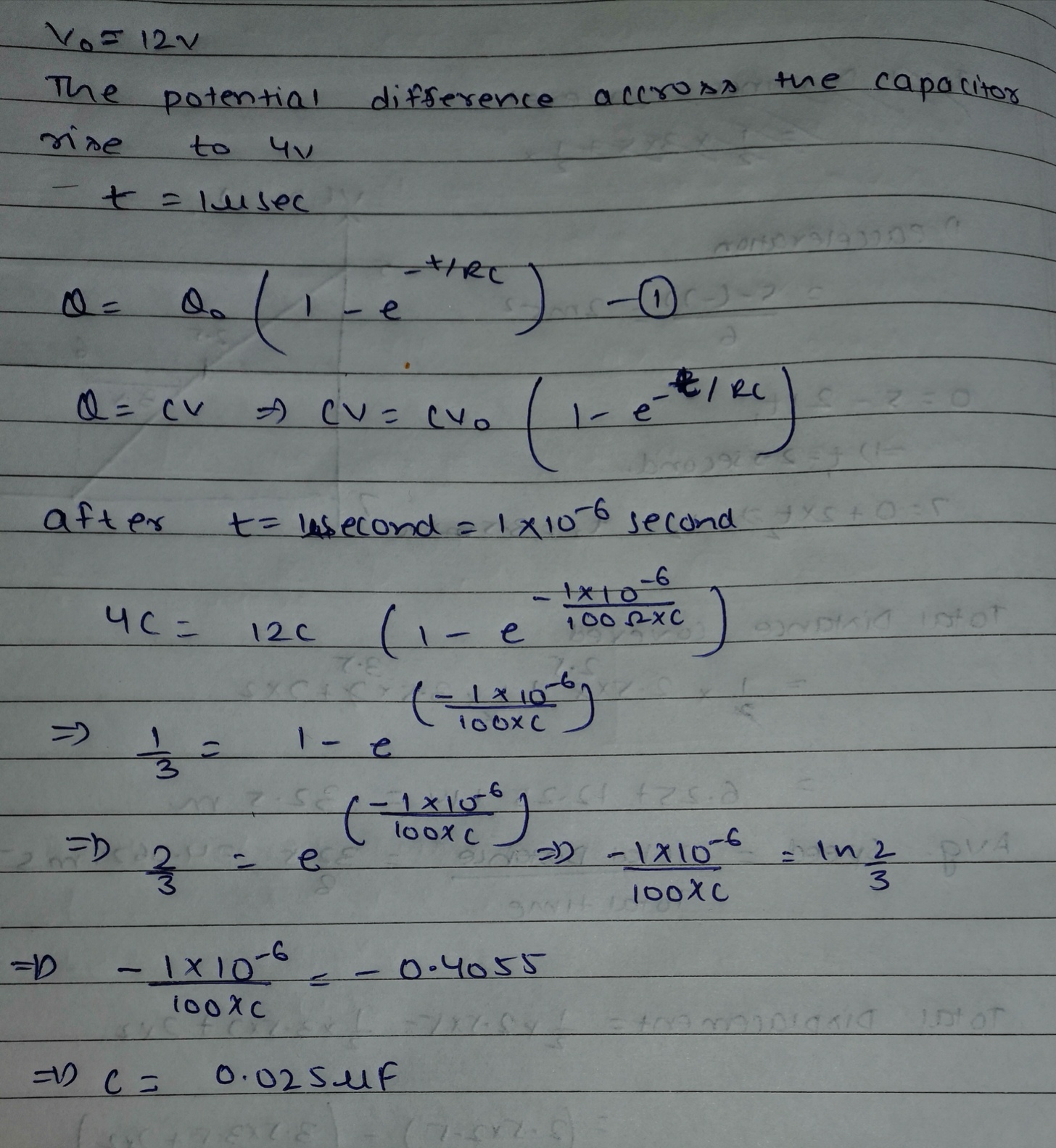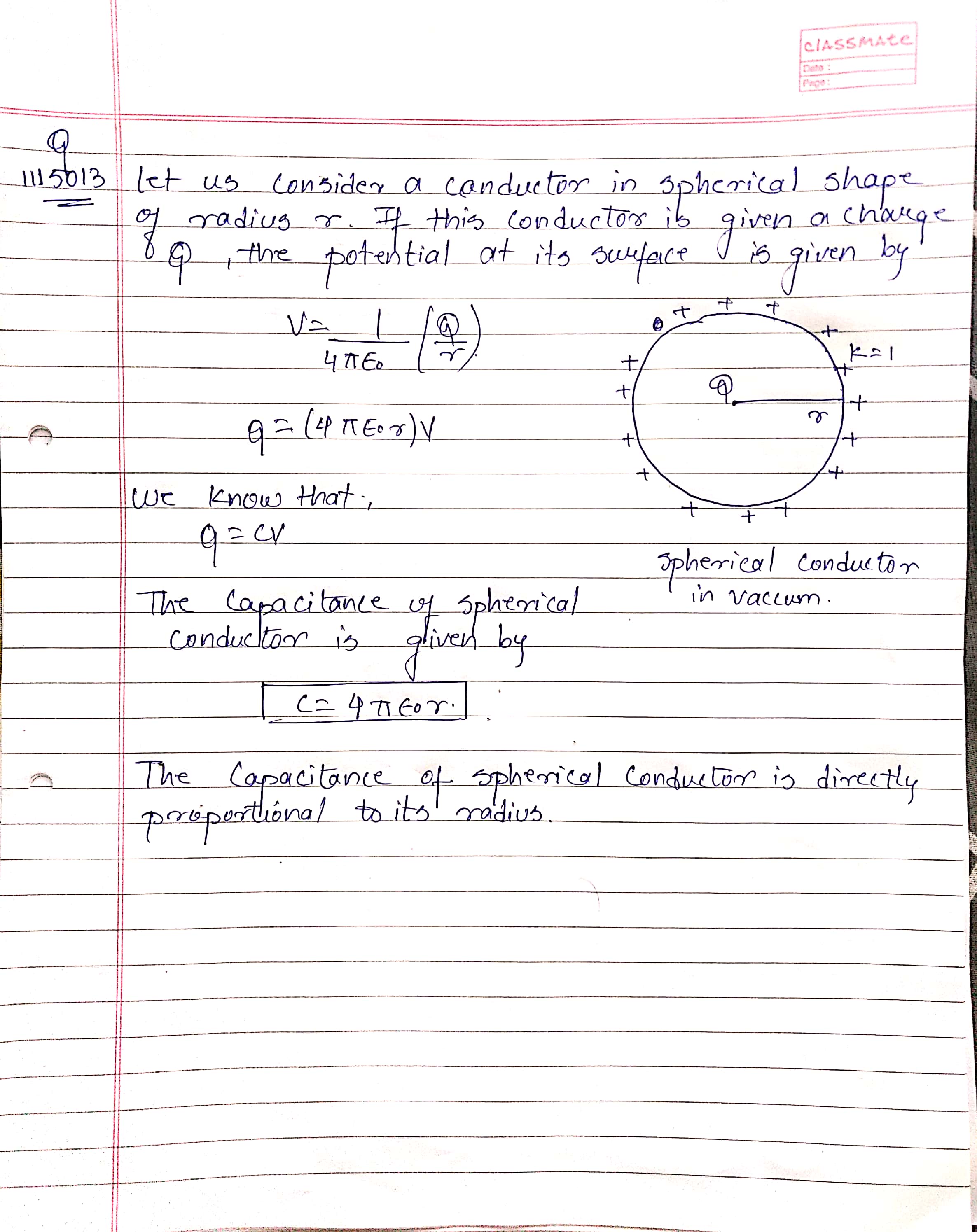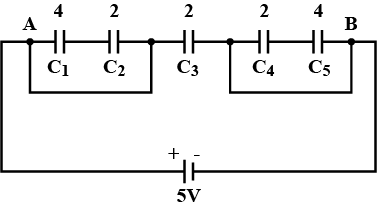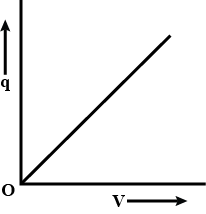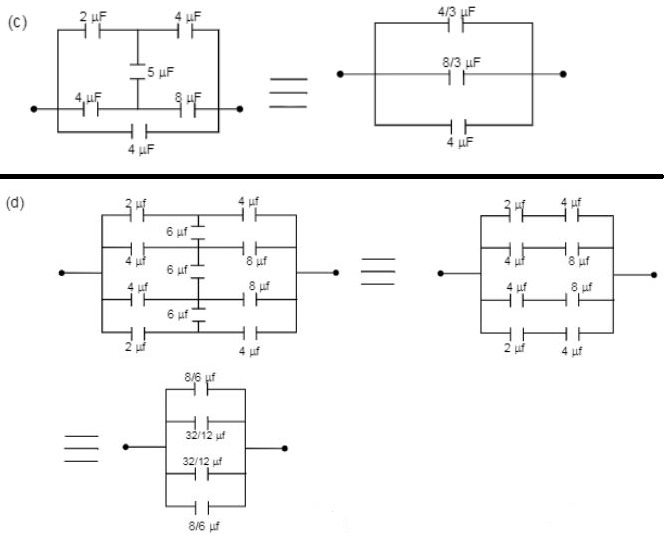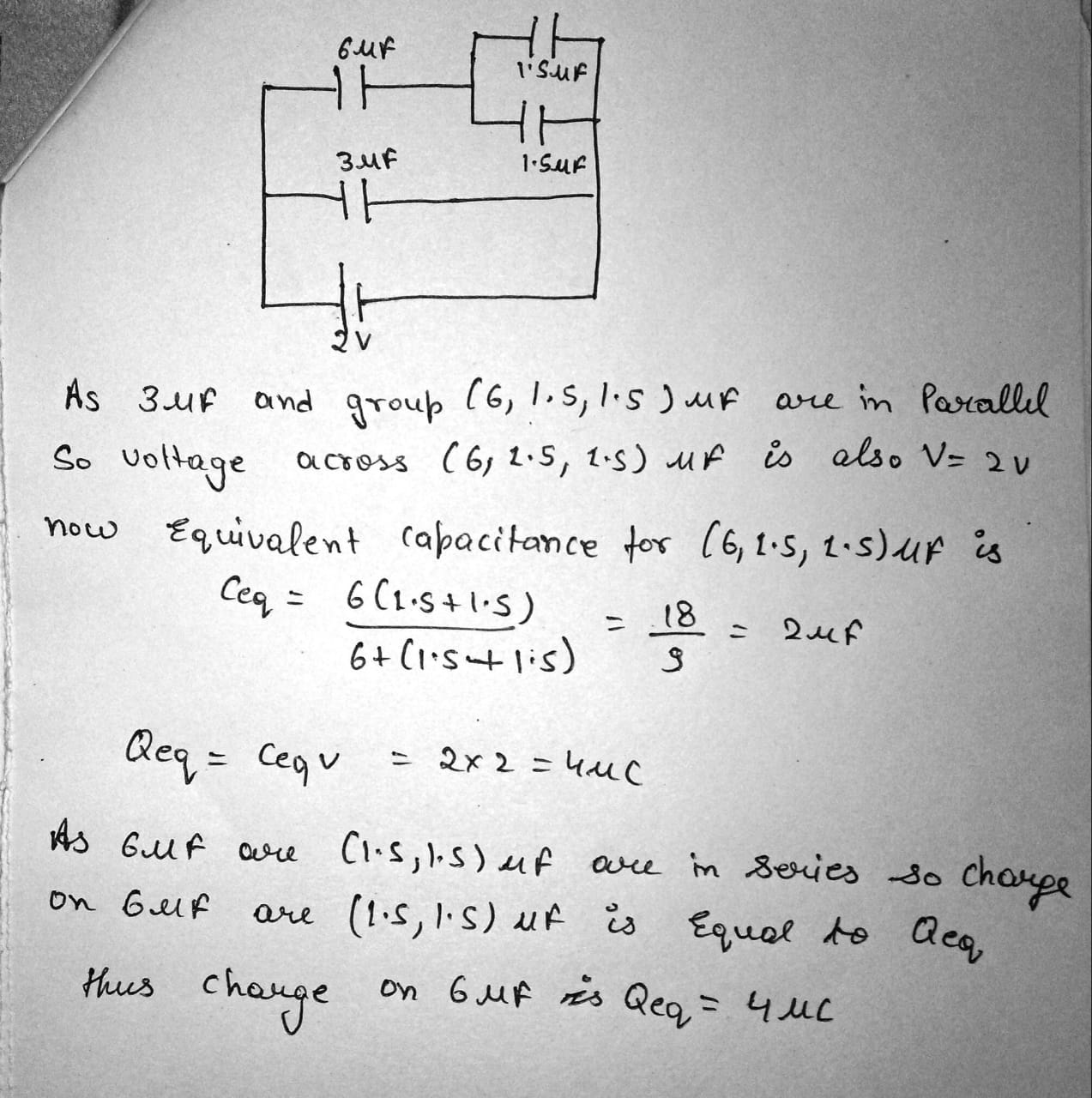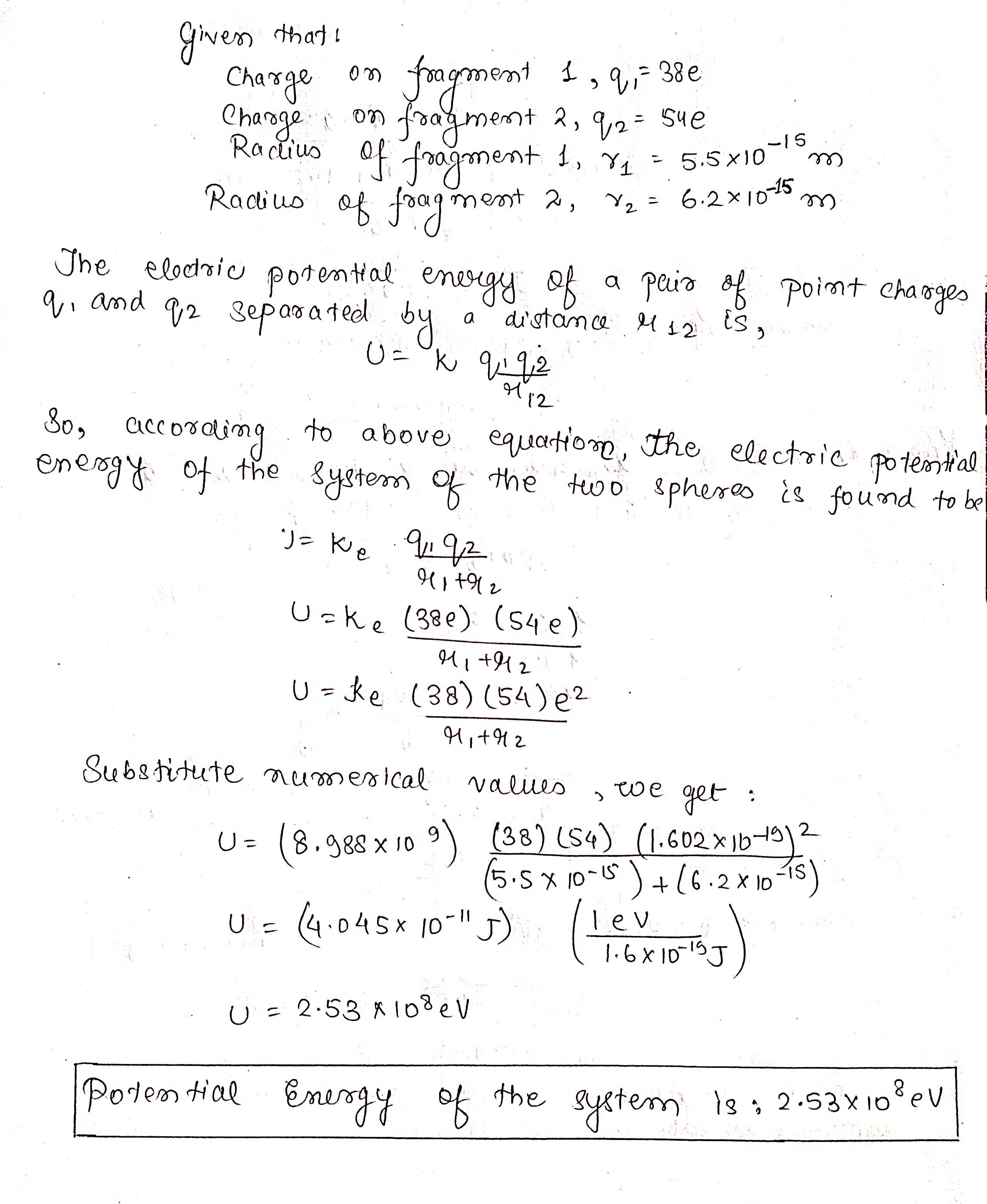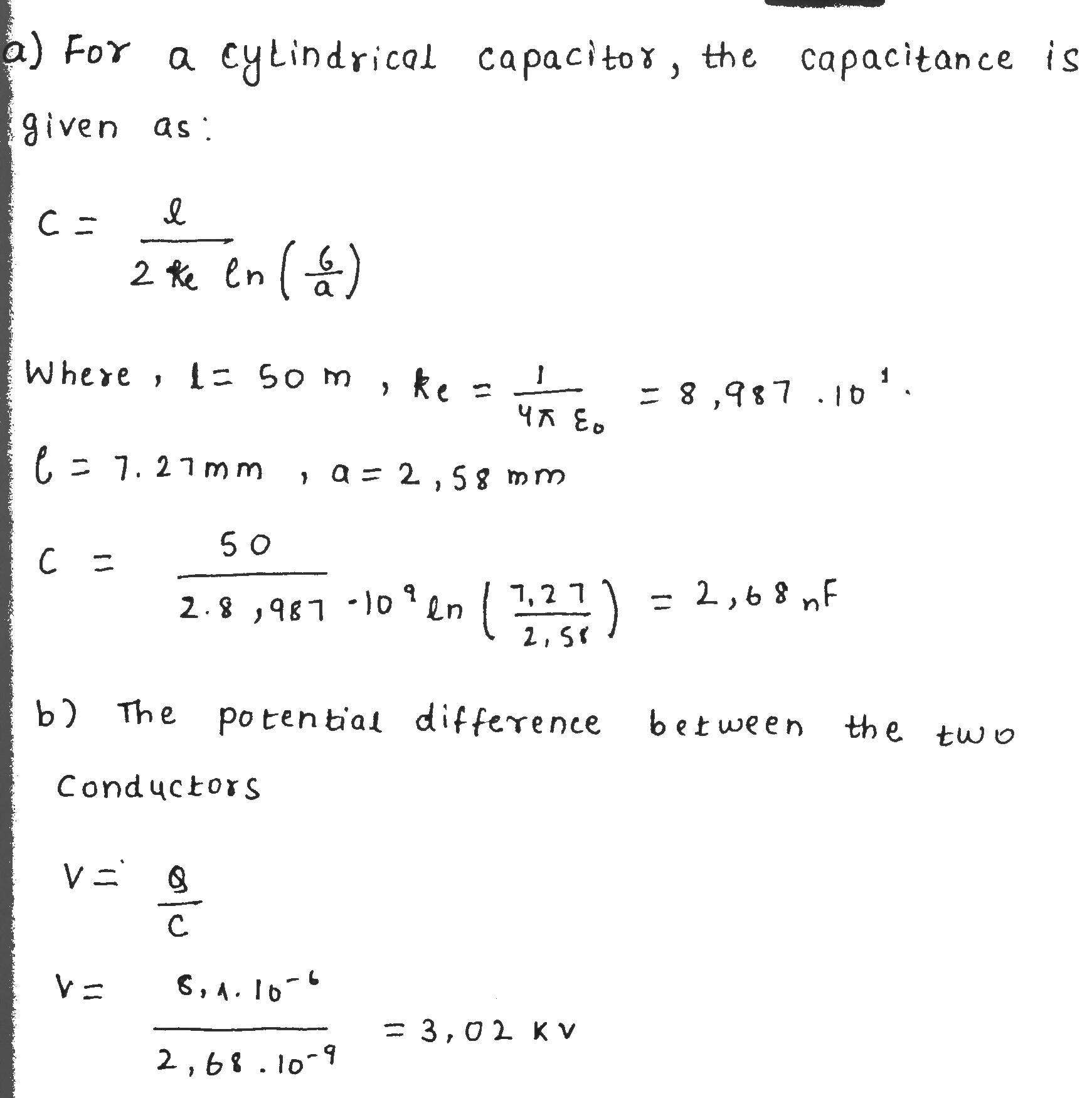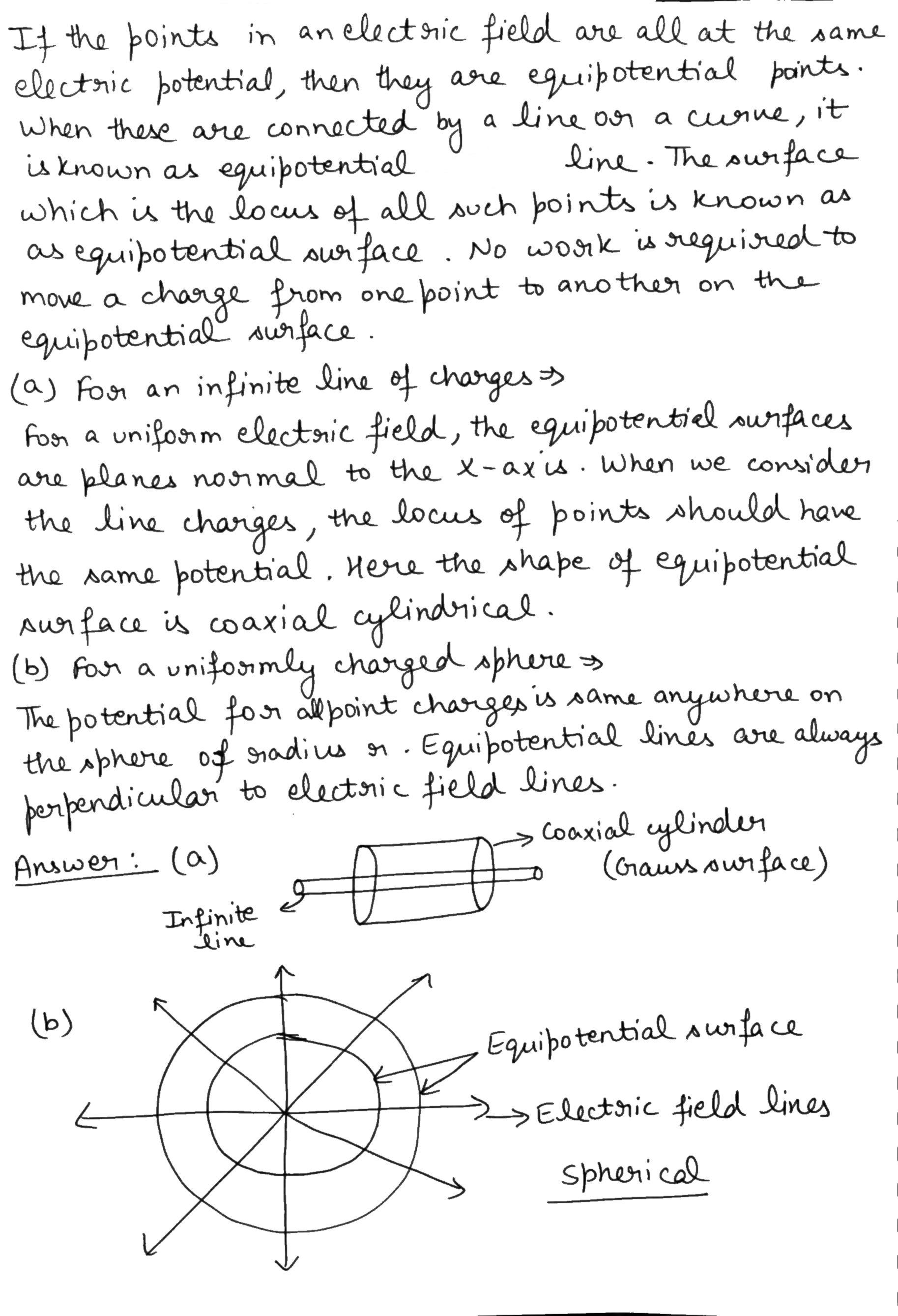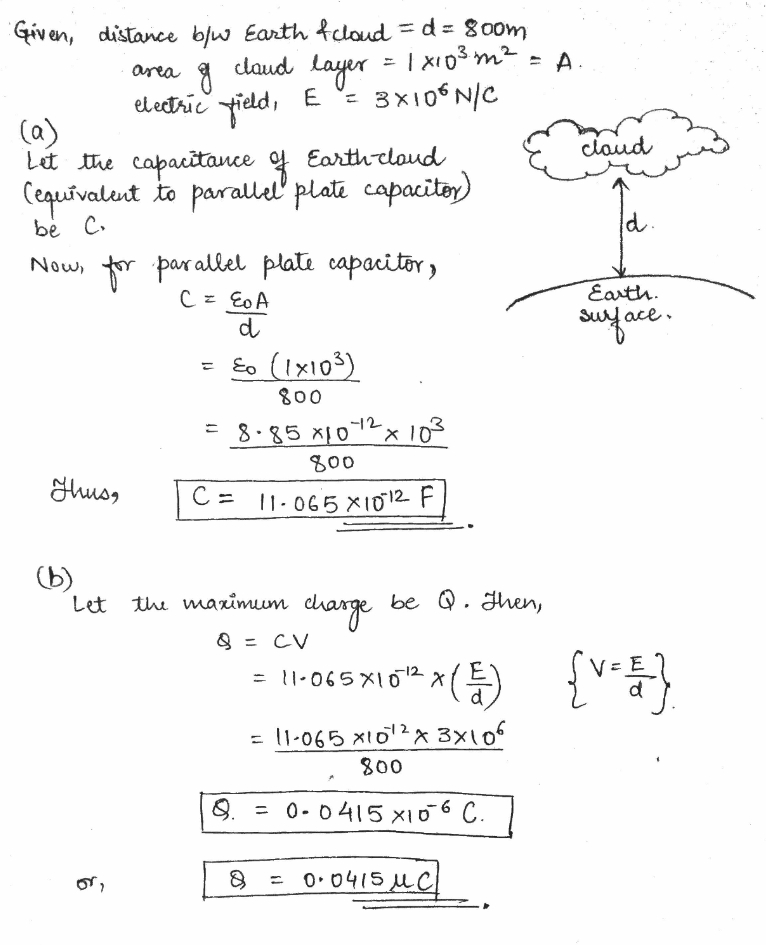Electrostatic Potential And Capacitance - Class 12 Engineering Physics - Extra Questions
What is the field in the cavity if a conductor having a cavity is charged? Does the result depend on the shape and size of cavity or conductor?
Define an equipotential surface. Draw equipotential surfaces: Can electric field exist tangential to an equipotential surface? Give reason.
When a small uncharged conducting ball of radius a =1cm and mass m = 50 g is dropped from a height h above the center of another large conducting sphere of radius b (=1 m) having charge Q (=100 $$\mu$$C), it rises to a height $$h_1$$ (= 2m) after the collision. The value of h is $$\dfrac{x}{10}$$. Find x. Assume that during the impact there is no dissipation of energy.
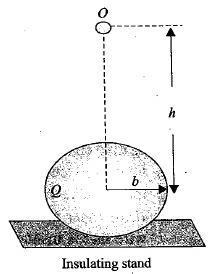
A parallel-plate capacitor having plate area $$20 cm^2$$ and separation between the plates 1.00 mm is connected to a battery of $$12.0 V$$. The plates are pulled apart to increase the separation to $$2.0 mm$$. Calculate the stored energy in the electric field before and after the process.
Why are equipotential surfaces perpendicular to field lines ?
Write two properties of equipotential surfaces. Depict equipotential surfaces due to an isolated point charge. Why do the equipotential surfaces get closer as the distance between the equipotential surface and the source charge decreases ?
A 12pF capacitor is connected to a 50V battery. How much electrostatic energy is stored in the capacitor?
Two capacitors of unknown capacitances $$\displaystyle { C }_{ 1 }$$ and $$\displaystyle { C }_{ 2 }$$ are connected first in series and then in parallel across a battery of 100V. If the energy stored in two combinations is 0.045 J and 0.25 J respectively, determine the value of $$\displaystyle { C }_{ 1 }$$ and $$\displaystyle { C }_{ 2 }$$. Also calculate the charge on each capacitor in parallel combination.
For any charge configuration, equipotential surface through a point is normal to the electric field. Justify :
A parallel plate capacitor of capacitance C is charged to a potential V. It is then connected to another uncharged capacitor having the same capacitance. Find out the ratio of the energy stored in the combined system to that stored initially in the single capacitor.
Electrostatic energy of $$3.5 \times {10}^{-4}J$$ is stored in a capacitor at $$700 V$$. What is the charge on the capacitor ?
(a) Obtain a relation for equivalent capacitance of the series combination of capacitors. Draw a circuit diagram.
(b) $$10$$ capacitors each of capacity $$10\mu F$$ are joined first in series and then in parallel. Write the value of product of equivalent capacitances.
(c) What will be the value of capacitance of a $$4\mu F$$ capacitor if a dielectric of dielectric constant $$2$$ is inserted fully between the plates of parallel plate capacitor.
Define an equipotential surface,. Draw equipotential surfaces: In a constant electric field in Z - direction Why the equipotential surface about a single charge are not equidistant?
Define equipotential surface.
Derive the expression for potential energy of a system of two charges in the absence of the external electric field.
Three capacitors of capacitances $$4 \mu F, 6 \mu F$$ and $$8\mu F$$ are connected in parallel.
(i) What is the ratio of charges?
(ii) What is the ratio of potential differnces?
Derive an expression for energy stored in a capacitor. In which form energy is stored?
A capacitor of capacity $$C$$ is charged to a potential $$V$$. Then it is taken out and connected in parallel with an uncharged identical capacitor. Then charge on each capacitor will be _____.
Increase or decrease of electric potential energy depends on the distance or on the high of the two change?
A $$10\mu F$$ capacitor is connected to a $$100V$$ battery. What is the electrostatic energy stored?
A capacitor is connected to a $$12\ V$$ battery through a resistance of $$10\Omega$$. it is found that the potential difference across the capacitor rises to $$4.0\ V$$ in $$1\ \mu s$$. Find the capacitance of the capacitor.
(GIven $$\ell n 3=1.0986, \ell$$ n2 = 0..693)
Derive the expression for capacitance of the spherical conductor
Define an equipotential surface. Draw equipotential surfaces: In the case of a single point charge
Derive an expression for effective capacitance of three capacitors connected in parallel.
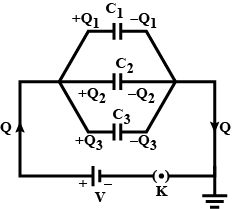
Two identical non-conducting spherical shells having equal charge Q, which is uniformly distributed on it, are placed at a distance d apart, from where they are released. Find out kinetic energy of each sphere when they are at a large distance.
A parallel-plate capacitor with the plate area $$100 \,cm^2$$ and the separation between the plats $$1.0 \, cm$$ is connected across a battery of emf $$24$$ volts. Find the force of attraction between the plates.
In a hydrogen atom, the electron and proton and bound at a distance of about 0.53 A.
Estimate the potential energy of the system in eV, taking the zero of potential energy at infinite separation of electron from proton.
Find the equivalent capacitance of the infinite ladder shown in the figure between the point $$A$$ and $$B$$.
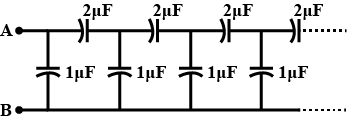
In a hydrogen atom, the electron and proton and bound at a distance of about 0.53 A.
What are the answers to (a) and (b) above if the zero of potential energy is taken at 1.06 A separation?
Two point charge $$q_1$$ and $$q_2$$ are kept r distance apart in a uniform external electric field $$\vec{E}$$. Find the amount of work done in assembling this system of charges.
In the figure given below, Find the
total energy stored in the network.
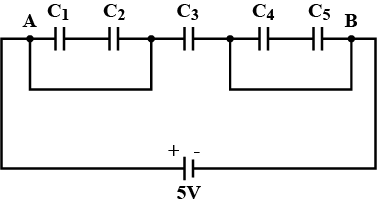
Obtain the formula for stored energy in a charged capacitor.
Define electric capacitance and write its S.I.unit.
In which from the energy of charged capacitor is stored ?
Conceptual Questions
The sum of the charges on both plates of a capacitor is zero. What does a capacitor store?
Match the entries of Column I with the entries of Column II
The plates of a parallel plate capacitor have an area of $$90\ cm^2$$ each and are separated by 2.5 mm. The capacitor is charged by connecting it to a 400 V supply.(a) How much electrostatic energy is stored by the capacitor?(b) View this energy as stored in the electrostatic field between the plates, and obtain the energy per unit volume u. Hence arrive at a relation between u and the magnitude of electric field E between the plates.
(a) How much electrostatic energy is stored by the capacitor?
Two uniformly large parallel thin plates having charge densities $$+\sigma$$ and $$-\sigma$$ are kept in the XZ-plane at distance $$d$$ apart. Sketch an equipotential surface due to electric field between the plates. If a particle of mass $$m$$ and charge $$-q$$ remains stationary between the plates. What is the magnitude and direction of this field?
Find the equivalent capacitances of the combinations shown in figure between the indicated points.
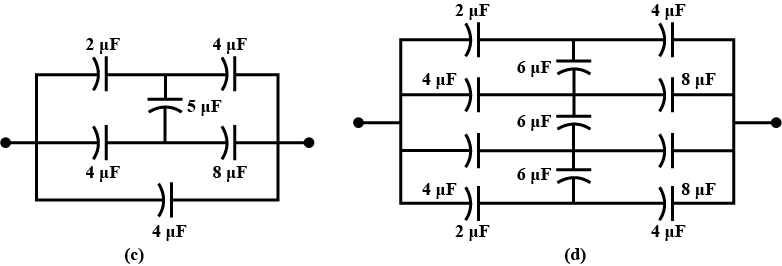
Each capacitance shown in the figure is in $$\mu F$$. Find the charge on $$6\mu F$$ in $$\mu C$$.
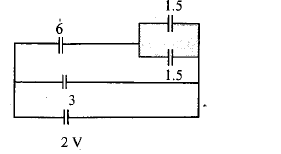
Three capacitors C$$_1$$, C$$_2$$ and C$$_3$$ are connected in parallel combination. Obtain the relation for equivalent capacitance .
The liquid-drop model of the atomic nucleus suggests high-energy oscillations of certain nuclei can split the nucleus into two unequal fragments plus a few neutrons. The fission products acquire kinetic energy from their mutual Coulomb repulsion. Assume the charge is distributed uniformly throughout the volume of each spherical fragment and, immediately before separating, each fragment is at rest and their surfaces are in contact. The electrons surrounding the nucleus can be ignored. Calculate the electric potential energy (in electron volts) of two spherical fragments from a uranium nucleus having the following charges and radii: $$38e$$ and $$5.50 \times 10^{-15} \,m$$, and $$54e$$ and $$6.20 \times 10^{-15} \,m$$.
Calculating Capacitance
A $$50.0-m$$ length of coaxial cable has an inner conductor that has a diameter of $$2.58 \,mm$$ and carries a charge of $$8.10 \mu C$$. The surrounding conductor has an inner diameter of $$7.27 \,mm$$ and a charge of $$8.10 \mu C$$. Assume the region between the conductors is air.
(a) What is the capacitance of this cable?
(b) What is the potential difference between the two conductors?
Conceptual Questions
Describe the equipotential surfaces for (a) an infinite line of charge and (b) a uniformly charged sphere.
A solid sphere of radius $$R$$ has a uniform charge density $$\rho$$ and total charge $$Q$$. Derive an expression for its totalelectric potential energy. Suggestion: Imagine the sphere is constructed by adding successive layers of concentric shells of charge $$dq =(4\pi r^2 \,dr)\rho$$ and use $$dU =V dq$$
Calculating Capacitance
(a) Regarding the Earth and a cloud layer $$800 \,m$$ above the Earth as the "plates" of a capacitor, calculate the capacitance of the Earthcloud layer system.Assume the cloud layer has an area of $$1.00 km^2$$ and the air between the cloud and the ground is pure and dry. Assume charge builds up on the cloud and on the ground until a uniform electric field of $$3.00 \times 10^6 \,N/C$$ throughout the space between them makes the air break down and conduct electricity as a lightning bolt.
(b) What is the maximum charge the cloud can hold?
Class 12 Engineering Physics Extra Questions
- Alternating Current Extra Questions
- Atoms Extra Questions
- Current Electricity Extra Questions
- Dual Nature Of Radiation And Matter Extra Questions
- Electric Charges And Fields Extra Questions
- Electromagnetic Induction Extra Questions
- Electromagnetic Waves Extra Questions
- Electrostatic Potential And Capacitance Extra Questions
- Magnetism And Matter Extra Questions
- Moving Charges And Magnetism Extra Questions
- Nuclei Extra Questions
- Ray Optics And Optical Instruments Extra Questions
- Semiconductor Electronics: Materials,Devices And Simple Circuits Extra Questions
- Wave Optics Extra Questions
